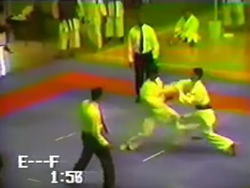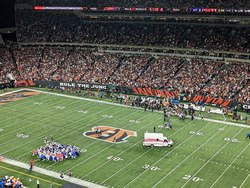UPDATED: One year ago, on Monday January 2nd 2023, Damar Hamlin suffered a cardiac arrest as a consequence of a tackle that impacted his chest. The football player had suffered a Commotio Cordis, a rare but known athletic cardiac injury that was reversed by the medical support teams present at the Cincinnati Football Stadium.
One year later, the University of Cincinnati has published a press release entitled "The Damar Hamlin Effect: Revolutionizing CPR and AED Training Nationwide". Because of this accident, the awareness for training in CardioPulmonary Resuscitation (CPR) and the need and availability of Automated External Defibrillators (AEDs) has increased. His foundation has to-date raised over 9 million dollars!
Following is the original (and updated) post:
I have received several questions regarding this term and its meaning, because of the cardiac arrest suffered on the field by the Buffalo Bills defensive player Damar Hamlin while playing the Cincinnati Bengals on January 2nd, 2023.
For those who were watching the game, close to the end of the first quarter Hamlin blocked another player in what looked like a normal and standard play. Immediately after, Damar Hamlin stood up and immediately collapsed. The video can be seen here. The player was treated on the field and later reports indicated that he had suffered a cardiac arrest and was treated with CPR (manual cardiopulmonary resuscitation), the use of an AED (Automated External Defibrillator) and oxygen. The player was intubated and was considered to be in critical, but stable condition.
The consensus is that Damar Hamlin suffered a ventricular arrhythmia, which allowed the heart to beat erratically, but not be able to pump blood, which is why he had to be defibrillated using the AED.
The cause for this is an uncommon (30 cases per year in the US) but known situation known as Commotio Cordis, a ventricular dysrhythmia caused by a sudden hit to the sternum in a particular location*. It has been seen in baseball and softball players where the pitcher is hit in the sternum by a fast ball coning from first base. Also seen in lacrosse players. In most cases this happens in younger individuals where the four sternabrae that form the body of the sternum have not yet completely ossified, making the sternum and lower costal cartilages quite flexible, being able to “bend in” when hit directly and compress the heart.
As some of you may know, I am a 7th Degree Black Belt in Goju-Ryu Karate. This type of punch to the sternum is one of the many techniques used in advanced Martial Arts. In most cases this punch will slow down an opponent, but it does not cause Commotio Cordis. It is a technique that should only be practiced under very close supervision. In fact, this technique was thought to be legend and was called “the touch of death” in China.

Commotio Cordis at a karate tournament
An example of Commotio Cordis caused by a Karate punch can be see in the following YouTube video. The image in this article shows the instant the chest strike happens at 6 seconds in the video. Look at the hand of the practitioner on the right and the devastating consequence that follows. Please note the similarity of the situation in this video and what happened to Damar Hamlin. There is a lapse of time between the Commotio Cordis cardiac arrest where the athlete gets up or walks followed fainting and unconsciousness. What is distressing is that the young martial artist who suffered this devastating injury died at the tournament. The judges were not aware of the situation, no one felt his pulse, or started life-saving CPR. Because of the content this video is age-restricted and you may have to sign in to view it.
The words are Latin. Commotio means “agitation or commotion”. Cordis means heart. The conditions to cause Commotio Cordis need to be exact, as the heart needs to be in ventricular repolarization, when the heart ventricles are starting to refill with blood. The "window" for a sternal hit to cause Commotio Cordis is very small.
Please, if you do not know how to provide CPR, take a full CPR course or at least attend a short 10 minute training like the one provided by University of Cincinnati Health in their "Take 10 Cincinnati" program.
For additional information please visit StatPearls at https://www.statpearls.com/ArticleLibrary/viewarticle/19761




